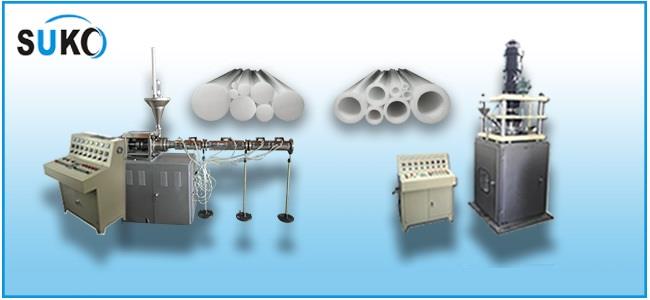Extrusion is widely used in various industries.The screw in the extruder rotates and develops sufficient pressure to force material to go through a die and produce products with desired geometry.
Injection molding is the most commonly used manufacturing process for the fabrication of plastic parts. A wide variety of products are manufactured using injection molding, which vary greatly in their size, complexity, and application. The injection molding process requires the use of an injection molding machine, raw plastic material, and a mold. The plastic is melted in the injection molding machine and then injected into the mold, where it cools and solidifies into the final part.

| Property Name | Polymer Extrusion | Injection Molding |
|---|---|---|
| Shapes | Flat, Thin-walled: Cylindrical, Thin-walled: Cubic, Solid: Cylindrical, Solid: Cubic | Thin-walled: Cylindrical, Thin-walled: Cubic, Thin-walled: Complex(Flat) |
| Part size | Diameter: 0.04 – 6.0 in | Envelope: 0.01 in³ – 80 ft³Weight: 0.5 oz – 55 lb |
| Materials | Thermoplastics(Elastomer, Thermosets) | Thermoplastics(Composites, Elastomer, Thermosets) |
| Surface finish – Ra (μin) | 16 – 63(8 – 75) | 4 – 16(1 – 32) |
| Tolerance (in.) | ± 0.04(± 0.01) | ± 0.008(± 0.002) |
| Max wall thickness | 0.016 – 6.0(0.0008 – 6.0) | 0.03 – 0.25(0.015 – 0.5) |
| Quantity | 10000 – 1000000 | 10000 – 1000000(1000 – 1000000) |
| Lead time | Weeks | Months(Weeks) |
| Advantages | Good surface finish, High production rate, Low labor cost, Little scrap generated | Can form complex shapes and fine details, Excellent surrface finish, Good dimensional accuracy, High production rate, Low labor cost, Scrap can be recycled |
| Disadvantages | Limited to uniform cross sections, High equipment cost, Long lead time possible | Limited to thin walled parts, High tooling and equipment cost, Long lead time possible |
| Applications | Rods, bars, tubing, sheet, cable, frames | Housings, containers, caps, fittings |
Post time: Dec-09-2018

